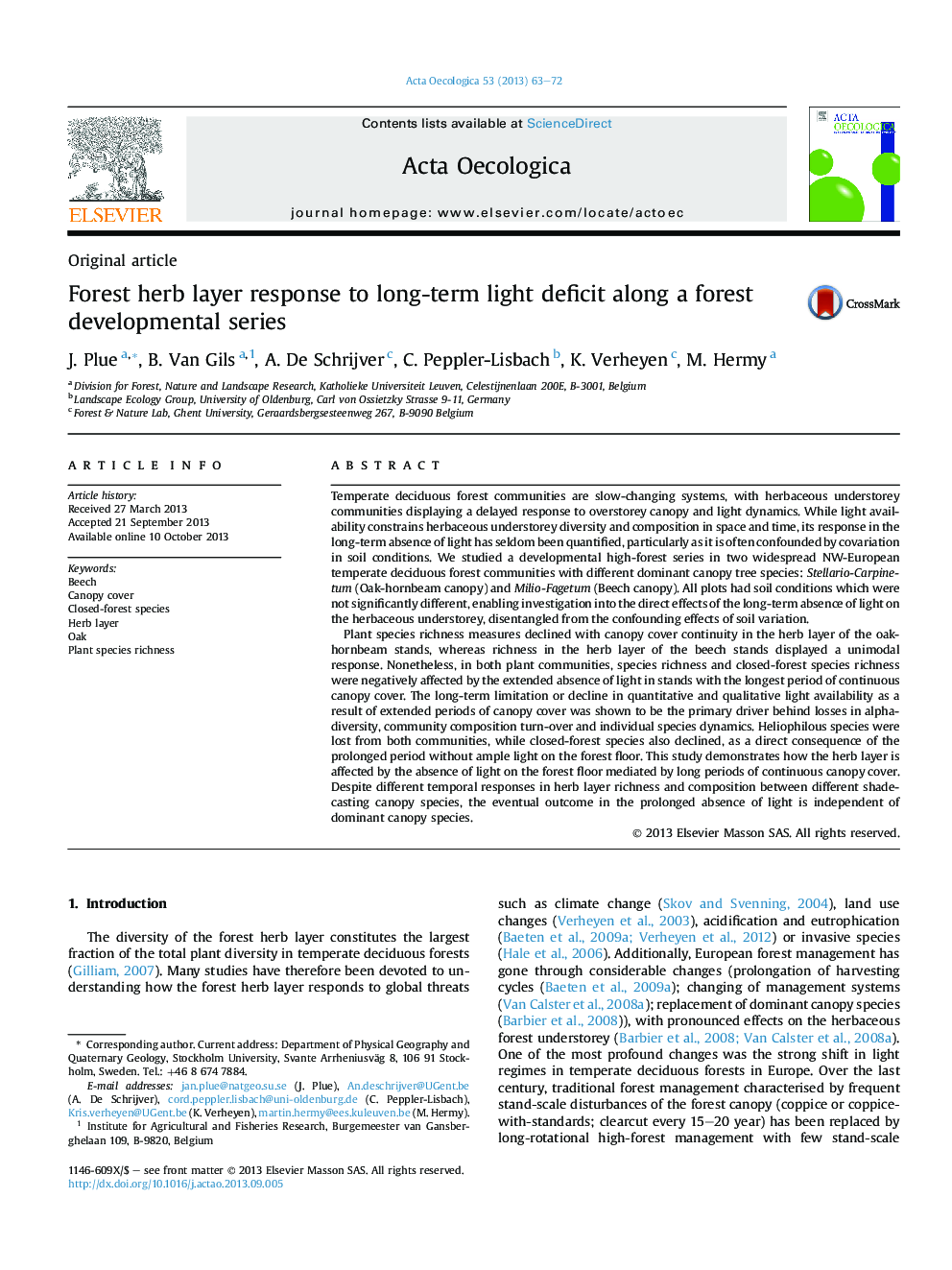| Article ID | Journal | Published Year | Pages | File Type |
|---|---|---|---|---|
| 6297347 | Acta Oecologica | 2013 | 10 Pages |
Abstract
Plant species richness measures declined with canopy cover continuity in the herb layer of the oak-hornbeam stands, whereas richness in the herb layer of the beech stands displayed a unimodal response. Nonetheless, in both plant communities, species richness and closed-forest species richness were negatively affected by the extended absence of light in stands with the longest period of continuous canopy cover. The long-term limitation or decline in quantitative and qualitative light availability as a result of extended periods of canopy cover was shown to be the primary driver behind losses in alpha-diversity, community composition turn-over and individual species dynamics. Heliophilous species were lost from both communities, while closed-forest species also declined, as a direct consequence of the prolonged period without ample light on the forest floor. This study demonstrates how the herb layer is affected by the absence of light on the forest floor mediated by long periods of continuous canopy cover. Despite different temporal responses in herb layer richness and composition between different shade-casting canopy species, the eventual outcome in the prolonged absence of light is independent of dominant canopy species.
Related Topics
Life Sciences
Agricultural and Biological Sciences
Ecology, Evolution, Behavior and Systematics
Authors
J. Plue, B. Van Gils, A. De Schrijver, C. Peppler-Lisbach, K. Verheyen, M. Hermy,
